 The Brook and 499 President Street are two new Brooklyn rentals launching early 2025
The Brook and 499 President Street are two new Brooklyn rentals launching early 2025
In this article:
Why and when to use a guarantor
There is only one reason to rely on a guarantor—to persuade an owner or bank that you really will pay your rent or mortgage in a timely manner. In most cases, people with short credit histories (younger people who are still in school or have just graduated), foreign nationals (people with little or no U.S.-based credit history), and people with average to poor credit histories (people with FICO scores that are below 680) are considered credit risks to building owners and banks and often require a guarantor. On the rental market, anyone who doesn’t make 40 times the annual rent also typically needs a guarantor. To be clear, bringing in a guarantor won’t necessarily enable you to close a deal—in some cases, even a guarantor won’t be considered enough to reduce your perceived risk—but in many cases, the guarantor will help persuade an otherwise reluctant owner and lender to close the deal.
How to use a guarantor to rent
On the rental side of the market, relying on guarantors is relatively common. Indeed, most apartments rented to students and recent graduates with relatively short work histories also involve a guarantor. To close the deal, the guarantor generally needs to make at least 80 times the monthly rent. This means, if you’re renting a one-bedroom apartment for $3,000 monthly, your guarantor will need to make at least $240,000 annually. If you’re sharing the apartment and only going to pay half the monthly rent, some owners are willing to combine more than one guarantors’ incomes (e.g., two parent guarantors’ making $120,000), but in many cases, owners will only accept a single guarantor.
In addition, if your guarantor lives in another country, you’ll likely run into problems. Many owners won’t accept foreign guarantors, and if they do, they typically ask for much higher income requirements and more money down. Wherever your guarantor lives, however, they will also need to be willing and able to produce all the appropriate paperwork needed to close the deal. This typically means handing over recent pay stubs and any information needed for the owner to run a credit check. Most owners will ask for one to two years of income tax returns.
But what if you don’t have a parent or close relative or friend in the United States who can serve as a guarantor? If this is the case, your best bet is to turn to a third-party guarantor such as Insurent or TheGuarantors. While these companies do charge a fee, generally only accept applicants with good credit histories, and don’t work with all owners, they can help at least some people overcome the credit and income requirements that typically determine who can and cannot rent in New York City.
How to use a guarantor to buy
Using a guarantor to buy is a lot more challenging. While some co-ops will accept guarantors (this is generally stated in the listing if it is permissible), many co-ops don’t permit guarantors. The logic is simple: If you can’t afford the unit, you’re probably not the sort of resident welcome in the co-op. For this reason, if you anticipate relying on a guarantor, the condo market is nearly always a better bet.
In the case of a guarantor mortgage or family assisted mortgage, the guarantor doesn’t own a share in the property. They are simply signing a contract to indicate that if the owner falls behind on their mortgage payments, they agree to be legally obligated to step in and pay. In most cases, guarantors are only used when someone is a first-time buyer with a small deposit, a borrower with a low income, or a borrower with a low or non-existent credit score (e.g., a recent graduate who is just starting to build up their credit history). In some cases, people buying properties that appear to be beyond their means may also bring in a guarantor. The guarantor typically must already own their own property, have a high enough income to cover the mortgage payments if the owner falls behind, and a strong credit history. Notably, relying on a guarantor to purchase a property is different from serving as a co-applicant. Co-applicants also own a share in the property.
Considerations for renters, buyers, and guarantors
As a renter or buyer, there is nothing wrong with relying on a guarantor. If you’re a renter who opts to use a third-party guarantor, however, the decision will come at a cost. The real question is whether or not you should serve as a guarantor. For most parents, helping out a child is never a question, but still, what are you getting into when you agree to serve as a guarantor and are there any circumstances under which you should proceed with caution?
On the rental side of the market, serving as a guarantor on your child’s apartment is usually low risk, unless your child happens to be renting with multiple roommates and you are the sole guarantor. If this is the case, you may find yourself suddenly paying rent for a bunch of young adults you’ve never even met. If the rent isn’t paid, of course, you may also risk having your own credit rating take a hit.
For this reason, guarantors in rental situations involving roommates are strongly advised to take at least two precautions. First, if you’re serving as a guarantor on a multi-tenant rental, ask your child’s roommates to sign a contract that stipulates their obligations prior to closing the deal. Second, when negotiating with the owner, stipulate that any late rent notices not only be sent to the tenants but also to you directly. While not all owners will comply, most will since ultimately, they don’t care where the rental income originates but only whether or not it arrives on time.
 SoMA (Compass)
SoMA (Compass)


All interiors feature high ceilings, custom Italian kitchens, in-unit laundry, and beautiful skyline and water views. Approximately 100,000 square feet of indoor and outdoor amenities include the 18,000-square-foot SoMA Athletic Club, a bowling alley, a game room, sports simulators, co-working and social lounges, a dining room and catering kitchen, and indoor and outdoor pools.
 Ray Harlem (Luxigon)
Ray Harlem (Luxigon)
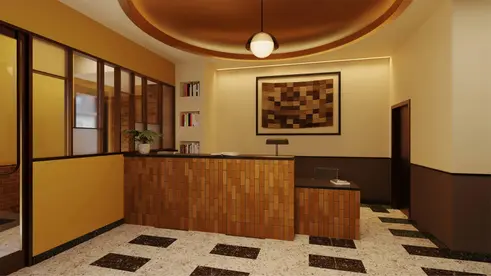
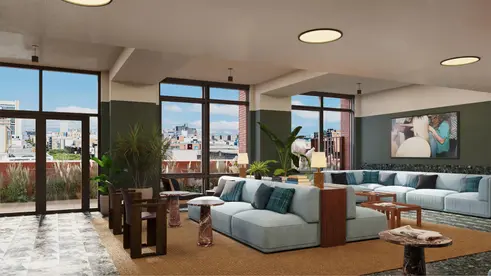
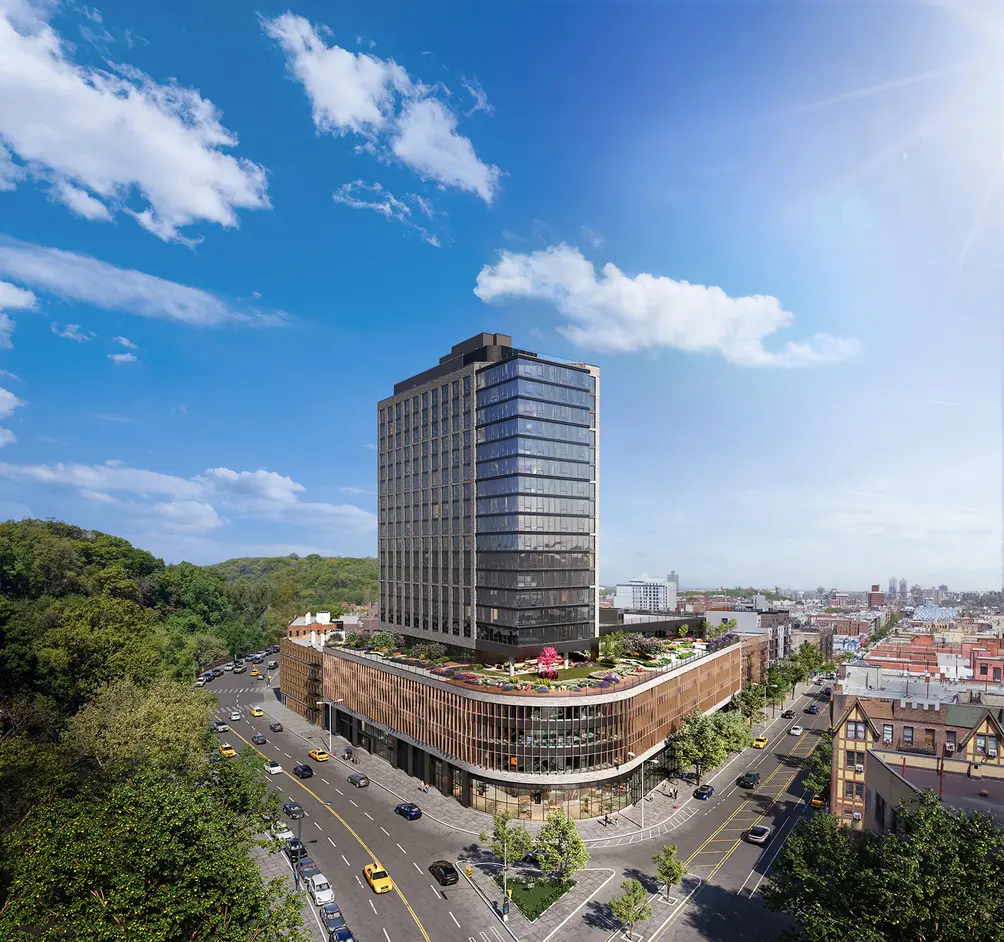 Forty-Six Fifty (Arden Group)
Forty-Six Fifty (Arden Group)
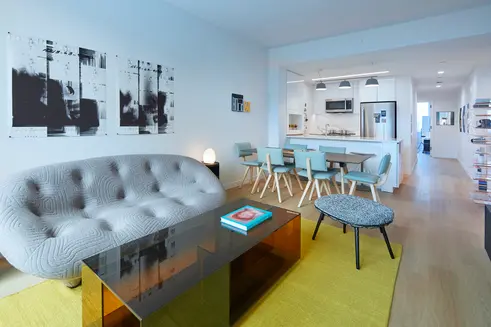

Amenities at Forty Six Broadway include a double-height lobby with green wall, a fitness center, a residents' lounge, a children's playroom, and a landscaped terrace with grills and views of Fort Tryon Park. The building's retail space is home to a Fine Fare supermarket and School on the Square charter school, and it is located in close proximity to Fort Tryon Park, the Cloisters, popular local restaurants, and the A and 1 trains.
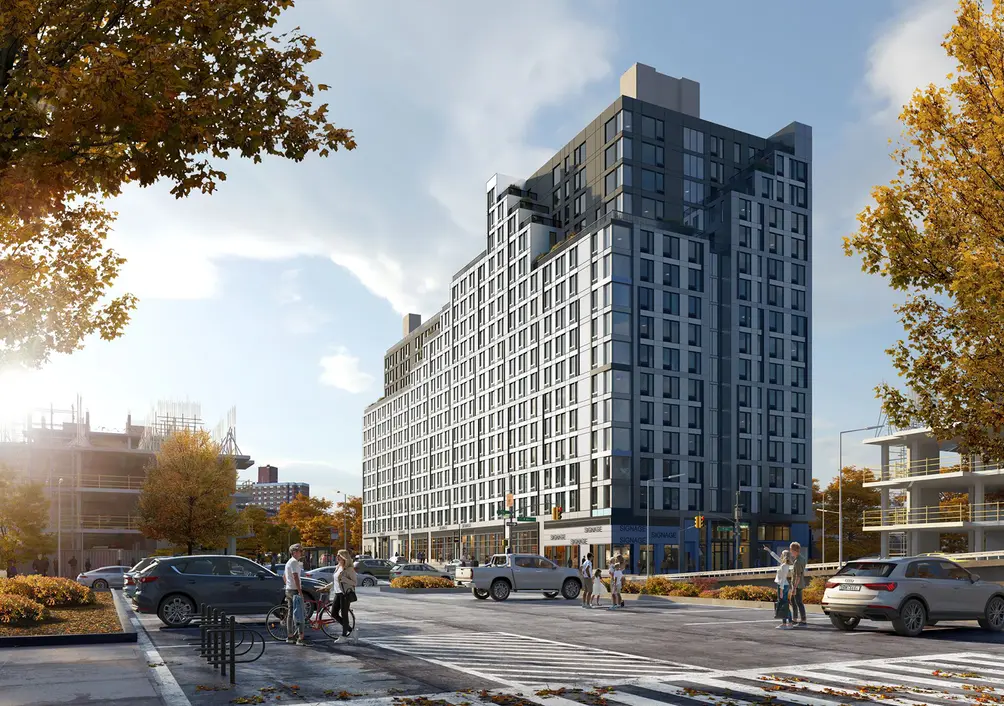 Inwood Living (Bohemia Realty Group)
Inwood Living (Bohemia Realty Group)
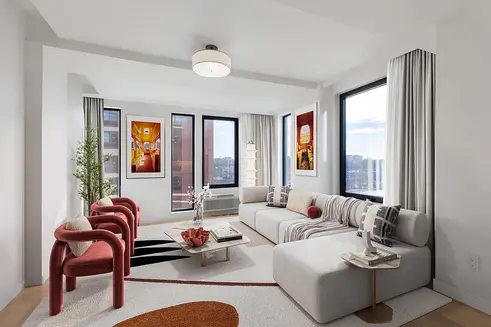

Indoor amenities at Inwood Living include a fitness center with yoga studio, a coworking lounge with private booths, a lounge with catering kitchen, and a children's playroom. A rooftop terrace boasts an outdoor kitchen as well as dining and sunbathing areas.
 The Brook (Witkoff)
The Brook (Witkoff)
All studio through two-bedroom units will feature oversized windows and interiors by Bonetti Kozerski. Approximately 30,000 square feet of amenities are set to include a fitness center, basketball and pickleball courts, a coworking lounge, an activity lounge with bar, a game room, and outdoor entertainment spaces with grills, dining areas, a children's playground, and a pool. And between a dog run and pet spa, four-legged residents of The Brook have not been forgotten.
 Williamsburg Wharf (Corcoran New Development)
Williamsburg Wharf (Corcoran New Development)


Select units have private outdoor space, and all residents have access to the Williamsburg Wharf Resort & Recreation Club, a collection of over 20,000 square feet of indoor and outdoor amenities. These include a state-of-the-art fitness center, an indoor basketball court, a game lounge, indoor lounges with terrace access, and a rooftop terrace with an outdoor pool that converts to a skating rink in winter.
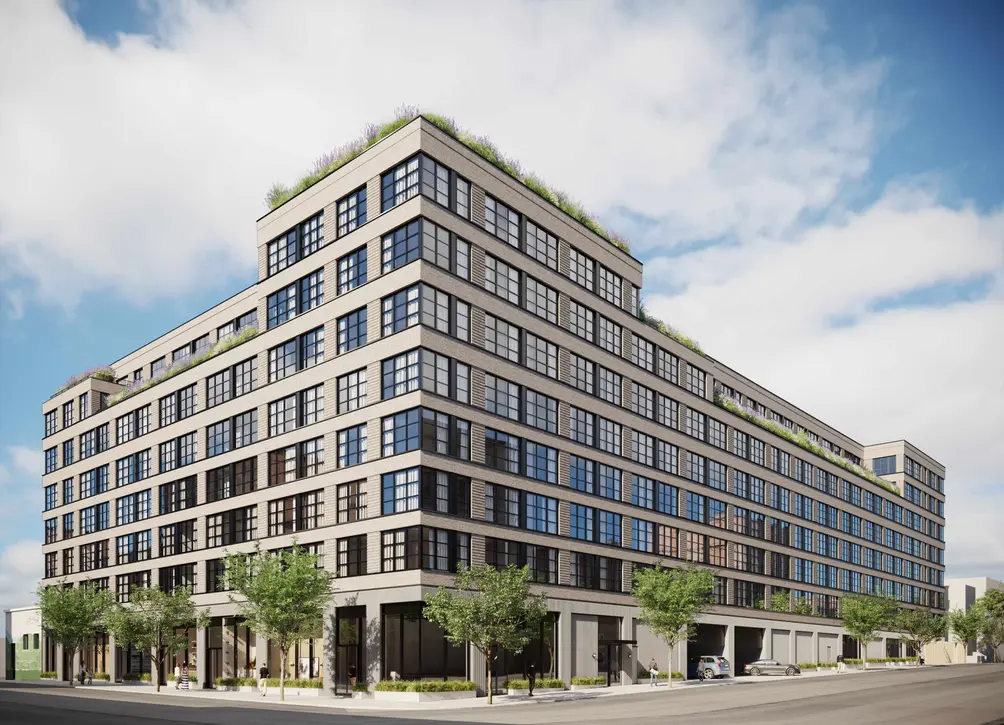 499 President Street (The Brodsky Organization)
499 President Street (The Brodsky Organization)
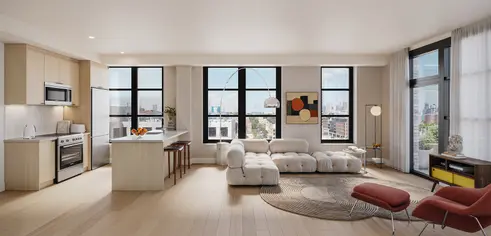

Amenities span 25,000 square feet across three floors and include a fitness center with yoga studio, a coworking lounge with solarium, a lounge and media room, a private dining room with terrace access, and a rooftop terrace with outdoor pool. A Paulie Gee's pizzeria outpost is opening in the base of the building, which is located in close proximity to 4th and 5th Avenue dining.
 (l-r) The Bold and The Italic (Fetner)
(l-r) The Bold and The Italic (Fetner)
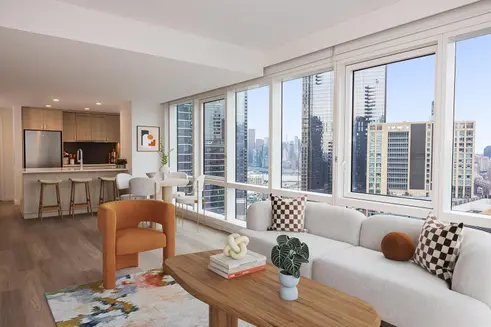

The Bold and The Italic took shape on the former site of a gas station, but offer convenient access to Long Island City transportation hubs. Closer to home, residents of both buildings can enjoy each other's amenity spaces; these include a lounge, fitness center, golf simulators, a demonstration kitchen, and a roof terrace.






 6sqft delivers the latest on real estate, architecture, and design, straight from New York City.
6sqft delivers the latest on real estate, architecture, and design, straight from New York City.
